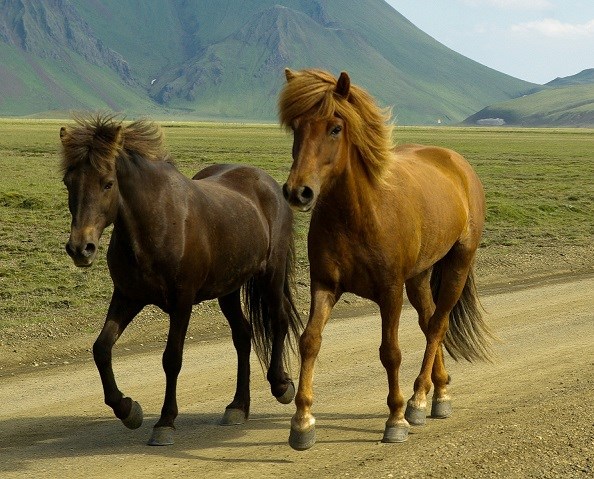Contact
Kim Jäderkvist Fegraeus
Doctoral Student at the Department of Animal Breeding and Genetics; Molecular genetics
Telephone: 018-671917
E-mail: kim.jaderkvist@slu.se

The Icelandic horse is a breed known mainly for its ability to perform the ambling four-beat gait 'tölt' and the lateral two-beat gait pace. The natural ability of the breed to perform these alternative gaits is highly desired by breeders. Therefore, the discovery that a nonsense mutation (C>A) in the DMRT3 gene was the main genetic factor for horses' ability to perform gaits in addition to walk, trot and canter was of great interest.
Although several studies have demonstrated that homozygosity for the DMRT3 mutation is important for the ability to pace, only about 70% of the homozygous mutant (AA) Icelandic horses are reported to pace.
The aim of the study was to genetically compare four- and five-gaited (i.e. horses with and without the ability to pace) AA Icelandic horses by performing a genomewide association (GWA) analysis. All horses (n = 55) were genotyped on the 670K Axiom Equine Genotyping Array, and a GWA analysis was performed using the GENABEL package in R. No SNP demonstrated genome-wide significance, implying that the ability to pace goes beyond the presence of a single gene variant.
Despite its limitations, the current study provides additional information regarding the genetic complexity of pacing ability in horses. However, to fully understand the genetic differences between four- and five-gaited AA horses, additional studies with larger sample materials and consistent phenotyping are needed.
http://onlinelibrary.wiley.com/doi/10.1111/age.12610/epdf
Jäderkvist Fegraeus, K., Hirschberg, I., Árnason, T., Andersson, L., Velie, B. D., Andersson, L. S. and Lindgren, G. (2017), To pace or not to pace: a pilot study of four- and five-gaited Icelandic horses homozygous for the DMRT3 'Gait Keeper' mutation. Anim Genet, 48: 694–697. doi:10.1111/age.12610
Kim Jäderkvist Fegraeus
Doctoral Student at the Department of Animal Breeding and Genetics; Molecular genetics
Telephone: 018-671917
E-mail: kim.jaderkvist@slu.se